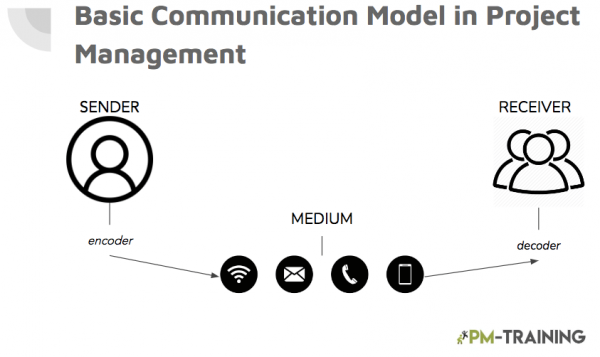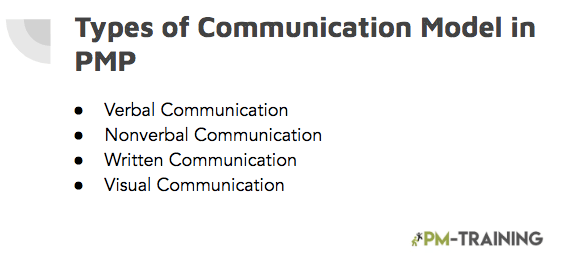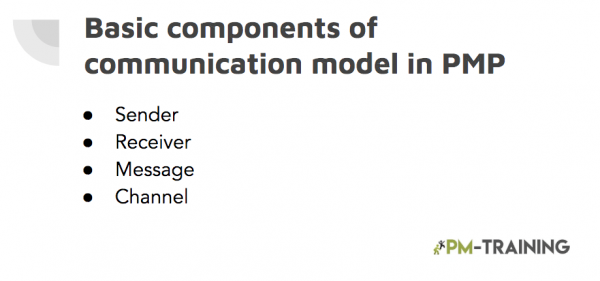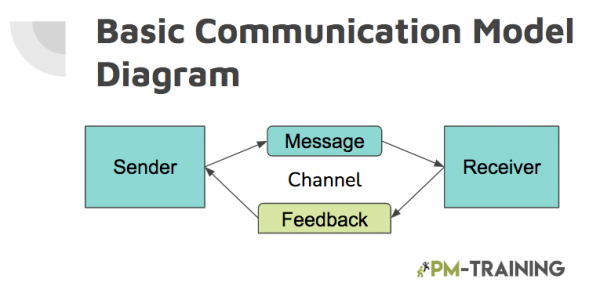The basic communication model in PMP is surprisingly simple. It consists of four basic elements: the sender, the message, the receiver, and the feedback.
The sender is the person who initiates the communication, the message is the information that is being communicated, the receiver is the person who receives the message, and the feedback is the response from the receiver. In order for communication to be effective, all four of these elements must be present.
An important aspect of every project manager’s job is communication. In order to be an effective communicator, it is important to understand the basic communication model. This model consists of a sender, receiver, message, channel, and feedback. The most important part of communication is understanding the needs of your audience.

You must be able to identify the stakeholders of your project and determine what information they need in order to be successful. It is also important to understand the communication preferences of your team members. Some individuals prefer to receive information verbally, while others prefer written communication.
It is important to cater to the needs of your team in order to ensure that they are able to understand the information that you are trying
Types of Communication Model in PMP
There are four main types of communication in project management: verbal, written, nonverbal, and visual where each type of communication has its own strengths and weaknesses, and each can be used in different situations.

Verbal Communication
Verbal communication is the process of transferring information from one person to another using spoken language.
It is one of the most common and effective forms of communication. The sending and receiving of communication can happen simultaneously, or one after the other.
Verbal communication requires both parties to be present at the same time, which can make it difficult to manage. It can also be challenging to ensure that the message is conveyed clearly.
For these reasons, project managers often rely on written communication to give and receive instructions. However, there are some situations where verbal communication is the best option.
Non Verbal communication
Nonverbal communication is based on the idea that information is communicated in more than just words that are spoken. This includes body language, facial expressions, tone of voice and other factors.
It is important to be aware of nonverbal communication in order to build better relationships and to avoid misunderstandings. There are many benefits to nonverbal communication, including the ability to build rapport, to influence others, and to better understand yourself and others.
Written Communication
The written communication model is used when the project manager needs to communicate with the team members in a written format. This could be in the form of emails, memos, or even project reports.
The ability to communicate clearly and concisely in writing is essential for conveying project updates, instructions, and other information to project team members, stakeholders, and other interested parties.
There are many different types of written communication, from emails and memos to project reports and presentations.
Visual
Visual communication is the process of transmitting messages or ideas using visuals such as images, illustrations, videos, and infographics.
It is an effective way to engage your audience, convey complex information, and achieve business goals.
As you can see, visual communication comes in many different forms. When choosing which type of visual communication to use, consider the purpose of your message, the audience you are trying to reach, and the resources you have available.
Components of the Communication Model
The basic communication model in PMP defines the process of how information is exchanged between sender and receiver. It includes four basic elements:

Any form of communication involves a sender who initiates the communication and a receiver who consumes the message communicated by the sender.
How information Flows in project management communication
A basic communication model diagram is a tool used in project management to help visually represent the flow of information between stakeholders. The communication model diagram can be used to identify misunderstandings or gaps in communication, and to plan how best to communicate with stakeholders going forward.
The communication model diagram is a visual representation of the communication process, which is made up of four essential components: the sender, the receiver, the message,the channel and the feedback.

The sender
The sender is the individual or team who is responsible for creating and sending the message.
The receiver
The receiver is the individual or team who is responsible for receiving and understanding the message.
The message
The message is the information that is being communicated, and the channel is the means by which the message is being sent (e.g., email, telephone, face-to-face).
The Channel
The communication channel is the medium through which communication takes place.
The feedback
It functions as the sender-receiver loop’s missing link, enlisting a response from the receiver to the sender.
What is effective Communication for Project Managers?
An effective communication model consists of three basic elements: sender, receiver, and message. The sender is the person who initiates the communication, the receiver is the person who gets the communication, and the message is the information that is being communicated.
What are the types of Communication Models?
There are four main types of communication in project management: verbal, written, nonverbal, and visual. Each type of communication has its own strengths and weaknesses, and each can be used in different situations.
What are the main components in a communication model?
The basic communication model in PMP is surprisingly simple. The model diagram consists of four basic elements: sender, receiver, message, and feedback.
